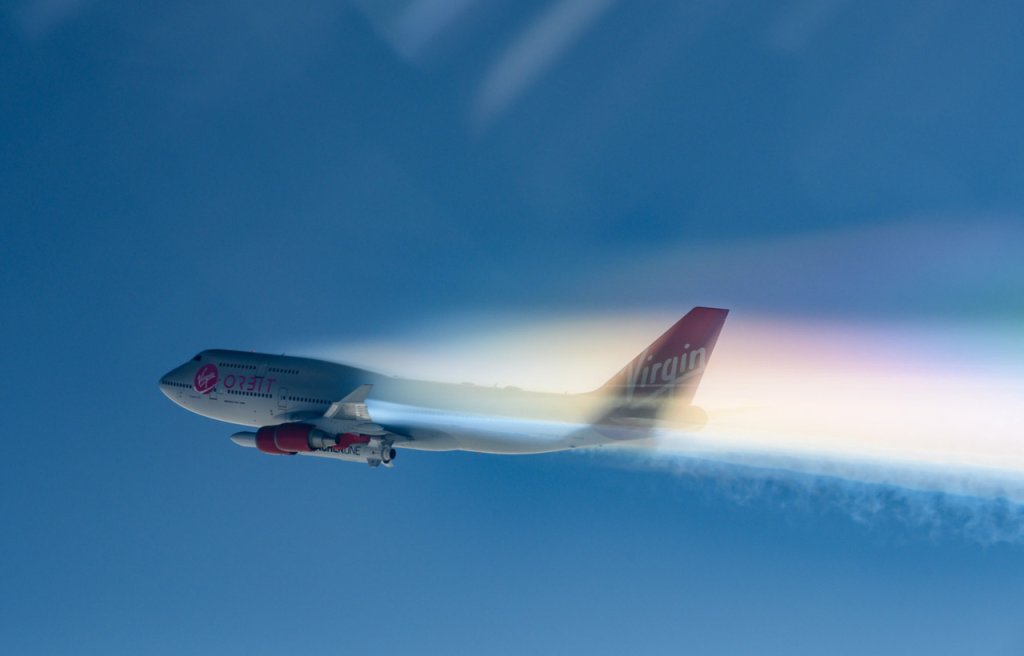
Virgin Orbit Spent More Than a Billion to Make Millions (Image Credit: Payload)

Virgin Orbit spent well over $1 billion developing a launch system that produced only tens of millions in revenues before the company went bankrupt. Richard Branson’s launch provider recently auctioned off most of its assets for just under $36.5 million and announced it would be shutting down for good.
Virgin Orbit’s LauncherOne flew six times between May 25, 2020 and January 9, 2023. Four launches succeeded. Failures on the maiden and final flights were bookends for four successful launches in 2021 and 2022.
How much was spent to achieve these results? An exact figure is unavailable, but a rough estimate of about $1.5 billion – roughly $250 million per launch – can be made based on statements by Virgin Group Chairman Richard Branson and the company’s filings with the Securities and Exchange Commission (SEC) after it went public in December 2021.

So, how do the numbers break down? And how much revenue did Virgin Orbit earn from its flights, which were sold at $12 million apiece?
A Long Gestation
The idea for launching small satellites using a rocket carried aloft by an airplane originated during the 2000’s at Virgin Orbit’s sister company, Virgin Galactic. The plan at the time was to use WhiteKnightTwo when it wasn’t air launching the SpaceShipTwo suborbital rocket plane. It would take more than a decade of effort to get to the first launch.
In July 2009, Aabar Investments put $280 million into Virgin Galactic for 31.8 percent of the company. Aabar was a sovereign wealth fund that invested oil profits for the Abu Dhabi government. The agreement included a provision for an additional investment once Virgin Galactic developed a plan for a rocket that would be air-launched by WhiteKnightTwo. Virgin Galactic hired an employee to lead the effort.
In October 2011, Virgin Galactic received $110 million from Aabar Investments to develop LauncherOne. The investment raised Aabar’s stake to 37.8 percent.
In 2017, Virgin Orbit was spun off from its sister company. By then, the plan had changed to launching a larger rocket from a modified Boeing 747 jetliner. LauncherOne’s maiden flight in May 2020 was a failure due to a break in a propellant line in the first stage.
In October 2020, Branson said the company had spent about $1 billion to date developing the satellite launch system.
The amount surprised Peter Beck, founder and CEO of rival launch provider Rocket Lab, a company that’s now acquired some of Virgin Orbit’s assets, at the time, Business Insider reported back in 2020:
“Less than $100m on development and a total of $180m to date including building 3 launch pads, 4 acres of production facilities, 2 mission controls, 14 flights and accounting for my mission to Venus 😉,” Beck said, referring to Rocket Lab’s plans for its new Photon spacecraft platform , which is designed for interplanetary travel.
Though Beck didn’t make a direct comparison to Virgin Orbit on Twitter, the two are competitors, and their development costs stand in stark contrast.
Beck also spoke to Ars Technica around the same time about Virgin Orbit’s development costs, then thought to be between $500 million and $700 million, according to Insider. “How do you spend that much money and have a return on investment?” Beck said to Ars. “And moreover, if you’ve spent that much money and you are where you are, maybe it’s time to have a re-think.”
Virgin Orbit’s bankruptcy not only eliminated one of Rocket Lab’s competitors, but it allowed Beck’s company to purchase Virgin Orbit’s production facility and manufacturing equipment in Long Beach, California for a bargain price of $16.1 million. Rocket Lab will use the assets in the production of its new Neutron launch vehicle.
Now let’s look at Virgin Orbit’s operating losses for the years 2020 through 2022 based on its SEC filings.
Virgin Orbit Operating Losses & Revenues, 2020-2022
| Year | Operating Loss | Revenue |
|---|---|---|
| 2020 | $179,466,000 | $3,840,000 |
| 2021 | $171,362,000 | $7,385,000 |
| 2022 | $216,363,000 | $33,106,000 |
| Total | $567,171,000 | $44,331,000 |
Much of the loss for 2020 was presumably included in Branson’s $1 billion estimate of what had been spent through mid-October of that year. Setting that aside, the company’s operating loss for 2021 and 2022 totaled $387,725,000 while revenue for all three years totaled $44,331,000.
But, what about this year? We have some good figures on the amount of cash and cash equivalents the company had on hand in 2023 as it went bankrupt and ceased operations.
2023 Virgin Orbit Cash & Auction Revenue
| Funds Available | Amount |
|---|---|
| Cash and cash equivalents, Dec. 31, 2022 | $51,200,000 |
| Virgin Investments Ltd. operating loans (February & March) | $15,000,000 |
| Virgin Investments Ltd. loans for bankruptcy period (April) | $31,600,000 |
| Total | $97,800,000 |
| Assets Auction proceeds | $36,468,684 |
| Total | $61,331,316 |
Adding up the known operating losses and the amount that Virgin Orbit is likely to spend while it completes the bankruptcy process and shuts down.
Virgin Orbit Expenditures
| Funding | Amount |
|---|---|
| Up to mid-October 2020 | $1,000,000,0000 |
| 2021 Operating loss | $171,362,000 |
| 2022 Operating loss | $216,363,000 |
| 2023 Funding minus assets sales | $61,331,316 |
| Total: | $1,449,056,632 |
This totals up to $1.45 billion, not including whatever portion of the 2020 operating loss might have occurred in the last two months of that year.







